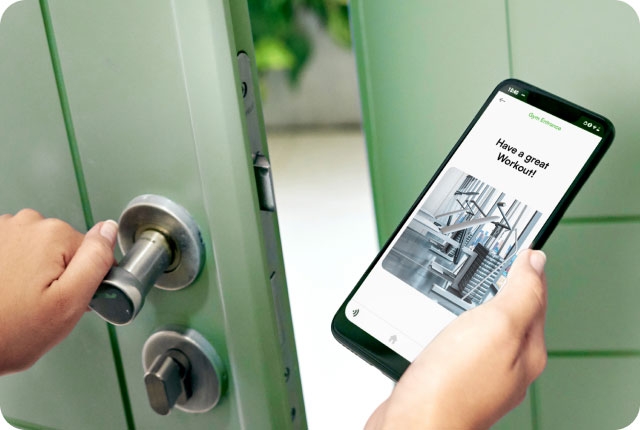Access control systems are crucial for ensuring security and protecting people and property in various facilities. When planning an access control project, several special requirements must be taken into account to guarantee the system functions effectively and safely. In this article, we will focus on six important requirements: fire-rated assembly, windstorm resistance, outdoor rating, preload capability, ease of maintenance, and integration with other systems.
Fire-Rated Assembly (NFPA 80)
The National Fire Protection Association (NFPA) 80 sets the standards for fire doors and fire door assemblies. Fire doors are critical components in fire protection systems and must meet certain requirements to prevent the spread of fire. NFPA 80 requires that fire doors be tested and certified to ensure they perform as intended in the event of a fire.
When specifying an access control system, it is crucial to ensure that the components used, including hinges, latches, and strike plates, are certified to meet NFPA 80 standards. These components must be tested and certified to remain functional in the event of a fire and not impede the performance of the fire door assembly. The installation of the access control system must not compromise the fire resistance of the door assembly.
Windstorm Resistant
Facilities located in areas prone to windstorms must have access control systems that can withstand high winds. Access control systems must be tested and certified to sustain winds up to 150 mph to ensure they remain operational in extreme weather conditions. The components of the system, including hinges, latches, and strike plates, must be designed to withstand high winds and maintain their integrity.
Outdoor Rated (UL 1034)
Access control systems located in outdoor areas must be designed to withstand the elements and maintain their functionality in extreme weather conditions. The Underwriters Laboratories (UL) 1034 standard sets the requirements for outdoor-rated access control systems. UL 1034 requires that access control systems be tested and certified to withstand exposure to rain, snow, and extreme temperatures.
Outdoor-rated access control systems must be constructed from materials that are resistant to corrosion and maintain their functionality in extreme temperatures. Components such as hinges, latches, and strike plates must be constructed from materials that are resistant to corrosion and maintain their functionality in extreme temperatures.
Preload Capable
Access control systems must be capable of handling preload forces, which are the forces generated when a door is pushed or pulled open. Preload forces can cause significant damage to access control systems, leading to costly repairs and downtime.
Access control systems must be designed to withstand preload forces and maintain their functionality in the event of a preload event. Components such as hinges, latches, and strike plates must be designed to withstand preload forces and maintain their functionality. The installation of the access control system must not compromise the preload capability of the door assembly.
Ease of Maintenance
Access control systems must be easy to maintain to ensure they remain functional and secure. The system must be designed with maintenance in mind, and components must be readily accessible for routine maintenance and repairs. Regular maintenance and inspections must be performed to ensure the system remains functional and secure.
Integration with Other Systems
Access control systems must be able to integrate with other systems, such as fire alarm systems and security cameras, to provide a comprehensive security solution. Integration of the access control system with other systems will enhance security and provide real-time information to respond to emergencies.
In conclusion, when planning an access control project, it is essential to take into consideration the six special requirements discussed in this article: fire-rated assembly, windstorm resistance, outdoor rating, preload capability, ease of maintenance, and integration with other systems. Ensuring that the access control system meets these requirements will help to ensure the safety and security of people and property and provide peace of mind in the event of an emergency.
Articles about the latest trends in the Access Control and Security industries. Written by the team at Kindoo.
Learn More About KindooCurious to learn more about Kindoo?

Curious to learn more about Kindoo?


